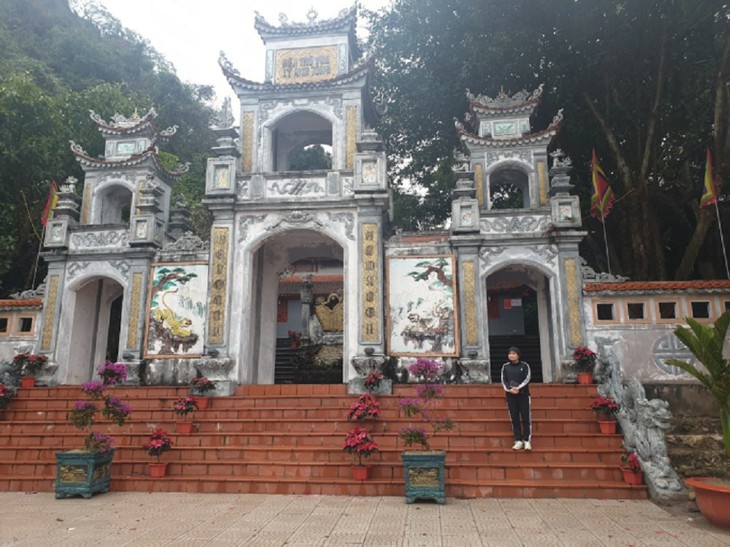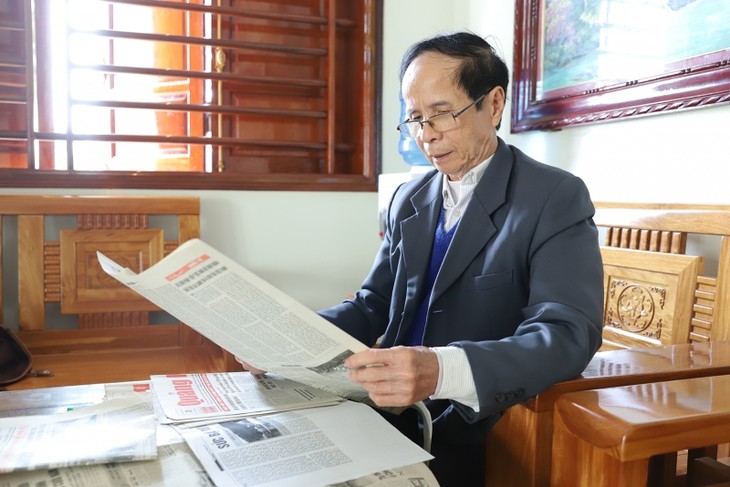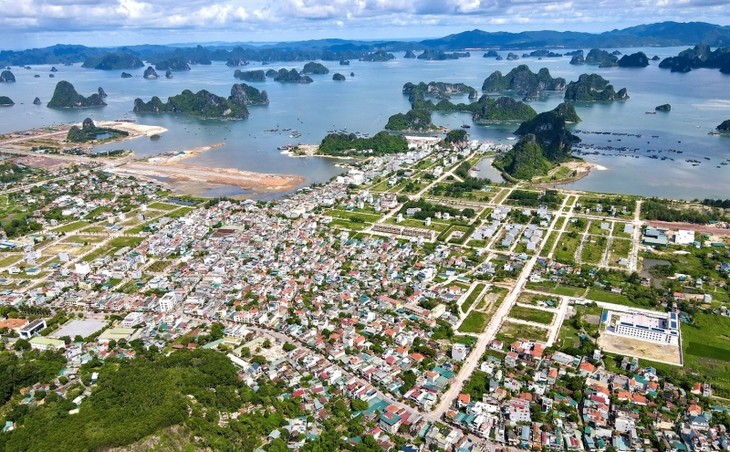(VOVWORLD) - Van Don, Vietnam’s first ever trading port in Quang Ninh province, has been operating for centuries. It is tapping into its natural and cultural potential to become a growth engine for the locality and Vietnam in general.
A tour guide is taking visitors to what used to be a wooden temple that worships King Ly Anh Tong, who allowed the construction of Van Dong as a trading port in 1149. This small temple, nestled at the foot of a limestone mountain, is a much lesser-known destination than Quan Lan, Ngoc Vung, and Co To scenic islands, which are all accessible via a boat trip from Cai Rong harbor. The port was busiest between the 12th and 18th century, when it facilitated trading between Vietnam and its neighbors and acted as a transit for cargo ships between northern and southern Asia and between India and the Mediterranean.
 King Ly Anh Tong temple (Photo: phapluatplus.vn) King Ly Anh Tong temple (Photo: phapluatplus.vn) |
According to Nguyen Minh Trang, former Chairman of the People’s Committee of Van Don district, this strategic location witnessed glorious victories of Vietnamese people against foreign invaders. In 1288, in Van Don, Vietnam’s naval forces commanded by Tran Khanh Du trapped the Mongol resupply fleet, which retreated to Bach Dang river where they were defeated.
The Quan Lan communal house festival, which recreates this historic battle and features a boat race, attracts huge crowds every year. Van Don islanders are exceptionally proud of their history and traditions, said Trang.
“Van Don residents always remember our roots and traditions no matter where we go. We task ourselves with preserving and promoting our age-old culture, which is a great booster to our development,” according to Trang.
 Nguyen Minh Trang, former Chairman of the People’s Committee of Van Don district (Photo: VOV) Nguyen Minh Trang, former Chairman of the People’s Committee of Van Don district (Photo: VOV) |
There are numerous difficulties Van Don has faced as a secluded island. In the 1980s and 1990s, seafood was its only source of income. Poor infrastructure and transportation made life so hard. In 2005, the Van Don bridge was inaugurated, connecting the island with the mainland. In 2015, all island communes were connected to the national electricity grid.
The Prime Minister issued a decision in 2007 to establish the Van Don economic hub and a revision was made in 2020 to develop until 2040 as a multi-sectoral marine economic hub and international trade port. Van Don will also evolve into an entertainment complex offering casino and unique, high-quality, competitive services.
Doan Huu Moc, who has been living in Cai Rong town, Van Don district, for 20 years, told VOV, “Our district began to thrive when Cai Bau pagoda and other tourist sites took shape. The inauguration of Van Don airport and highways has completely changed Van Don to attract greater investment in transportation, real-estate projects, and sea port facilities. Van Don has become more popular among tourists. We are really upbeat about a prosperous future for Van Don, which is within reach.”
The tidal flats are now turning into new urban areas and service complexes. Quang Ninh provincial authorities have made Van Don a magnet for giant resort, entertainment, high-tech, and smart urban projects, worth a total of 2.6 billion USD.
Early last year, Quang Ninh province made a dossier to seek recognition of the Van Don trade port historical complex as a special national relic, which is expected to attract more tourists.
 Van Don district (Photo: VOV) Van Don district (Photo: VOV) |
Dao Van Vu, Vice Chairman of the People’s Committee of Van Don district, said, “First and foremost, we will upgrade Quan Lan temple, revive Quan Lan festival which is a national intangible heritage, and restore the ancient ports on Ngoc Vung and Thang Loi island. We are calling for investment in tourism. Van Don is keen on green, smart, and sustainable development.”
In 2022, the Van Don-Mong Cai expressway will begin operation. This is an important transport gateway linking Vietnam with China and ASEAN countries that will create breakthroughs for local development.